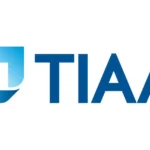“Paid-up additions are extra coverage in life insurance, offering more cash value and death benefits.”
Paid-up additions (PUAs) are a unique feature in life insurance. They let policyholders grow their cash value and death benefit without ongoing payments. Understanding how PUAs work can help maximize the benefits of your life insurance policy. For those wanting long-term value, paid-up additions can be a valuable tool.
Understanding Paid-Up Additions in Life Insurance
Paid-up additions are small, fully paid life insurance policies that are added to your existing policy. These additions increase both the cash value and the death benefit of your policy over time.
Since PUAs are fully paid, you don’t need to make future payments for them. They grow in value, making them a good option for those seeking additional benefits without extra payments.
Benefits of Paid-Up Additions

Paid-up additions come with several advantages. They help your policy’s cash value grow faster and can be used to increase your death benefit. This makes PUAs a useful option for long-term growth.
Additionally, PUAs provide more flexibility in your policy. They can offer financial support for future needs, such as retirement or emergencies.
How Do Paid-Up Additions Work?
Paid-up additions are purchased with dividends earned from participating whole life insurance policies. When dividends are issued, you can use them to buy more coverage in the form of PUAs.
Once the paid-up additions are added, they start generating their own cash value and contribute to the overall death benefit. Over time, this increases the total value of your life insurance policy.
Dividend Options for Paid-Up Additions
Life insurance policies offer different ways to use dividends. One common option is to purchase paid-up additions. This reinvestment helps you maximize your policy’s growth.
Another option is to take the dividends as cash, but using them to buy PUAs offers more long-term benefits, as they help grow both cash value and death benefits.
Paid-Up Additions vs. Regular Premium Payments
While regular premium payments keep your policy active, paid-up additions offer a different advantage. With PUAs, you don’t need to make ongoing payments. Once they’re added, they grow independently.
Regular premiums keep your policy in force, but PUAs add extra value without extra payments. This makes them ideal for those looking to grow their policy without increasing out-of-pocket expenses.
Comparing Cash Value Growth
The cash value in your policy grows faster with paid-up additions. Regular premiums build value more slowly, but PUAs accelerate this growth. Over time, your policy becomes more valuable.
This makes PUAs a smart strategy for building wealth within your life insurance policy, especially for long-term planning.
How Paid-Up Additions Affect Death Benefits
Paid-up additions not only grow cash value but also increase your policy’s death benefit. Each addition raises the payout your beneficiaries will receive.
This increase in death benefits can be significant over time. For those seeking to leave a larger legacy, PUAs are a great option.
Leaving a Larger Legacy
If you want to ensure your family gets the most out of your life insurance, paid-up additions are helpful. By boosting the death benefit, you can leave behind more financial support for your loved ones.
With more death benefits, PUAs provide long-term security for your family, making them an effective tool for legacy planning.
6 Milestones and How They Might Change Your Life Insurance Needs
Tax Benefits of Paid-Up Additions
The growth from paid-up additions is tax-deferred. This means you won’t pay taxes on the cash value growth until you withdraw it. This allows your cash value to accumulate more efficiently.
When used properly, PUAs can help build wealth over time while minimizing the tax burden. It’s important to speak with a tax professional for personalized advice.
Maximizing Tax-Deferred Growth
Paid-up additions allow your cash value to grow without being taxed until withdrawal. This tax deferral is key to growing wealth inside your life insurance policy.
By avoiding immediate taxes, you can maximize the amount that accumulates over time, making PUAs a smart financial choice.
How to Purchase Paid-Up Additions
You can purchase paid-up additions through your insurance company. Many insurers offer the option to reinvest dividends into PUAs.
Paid-up additions can also be bought with lump sum payments. This allows policyholders to make one-time investments into their policy for long-term growth.
Using Dividends or Lump Sums
Dividends are a popular way to buy paid-up additions. As they are paid out, you can reinvest them into your policy for future growth. Lump sum payments are another option for those wanting immediate benefits.
Both methods allow you to add value to your policy without ongoing payments, making PUAs a flexible solution.
Are Paid-Up Additions Right for You?

Not everyone will need paid-up additions, but they are beneficial for those looking for long-term growth. If you want to increase both the cash value and death benefit of your policy, PUAs might be a good choice.
They are especially useful for individuals focused on leaving a larger legacy or building tax-deferred wealth inside their policy.
Consider Your Financial Goals
When deciding if paid-up additions are right for you, consider your financial goals. If you want to grow your policy’s value over time, PUAs can be a great tool.
If your focus is on maintaining coverage without extra growth, you may not need to invest in paid-up additions.
Advantages of Paid-Up Additions
Paid-up additions offer several advantages, including faster cash value growth, higher death benefits, and tax deferral. These benefits can provide greater financial flexibility and long-term security.
For those focused on maximizing their life insurance policy’s value, PUAs offer a smart investment option.
Long-Term Financial Benefits
Paid-up additions build long-term wealth inside your life insurance policy. Over time, they contribute to both cash value and death benefits, making them an effective financial tool.
With tax-deferred growth, PUAs offer more than just coverage—they help build financial security for the future.
Disadvantages of Paid-Up Additions
Although paid-up additions offer several benefits, they may not be necessary for everyone. PUAs can increase the cost of your policy, and not all policies offer the option to buy them.
It’s important to understand your policy’s terms and consult with an insurance agent to determine if PUAs are right for you.
Weighing the Costs
Paid-up additions provide value, but they can also come with added costs. Some policies may charge fees or require larger investments for PUAs.
Before committing, weigh the potential costs against the long-term benefits to ensure that paid-up additions fit within your financial plan.
FAQs
What are paid-up additions in life insurance?
Paid-up additions are fully paid life insurance policies added to your existing policy. They increase both the cash value and death benefit.
How do paid-up additions work?
Paid-up additions are purchased using dividends from participating policies or lump sum payments. They grow in cash value and death benefit over time.
Are paid-up additions taxable?
The growth from paid-up additions is tax-deferred. You won’t pay taxes until you withdraw the cash value.
Can I buy paid-up additions with any policy?
Not all life insurance policies offer paid-up additions. Check with your insurer to see if your policy has this option.
Do paid-up additions increase my premiums?
No, paid-up additions are fully paid and don’t require ongoing premium payments. They are added to your policy without extra cost.
Conclusion
Paid-up additions are a useful tool for growing both cash value and death benefits in life insurance. By using dividends or lump sum payments, policyholders can increase the value of their policies without ongoing payments. They are especially beneficial for those focused on long-term growth, leaving a legacy, or building wealth tax-deferred.










